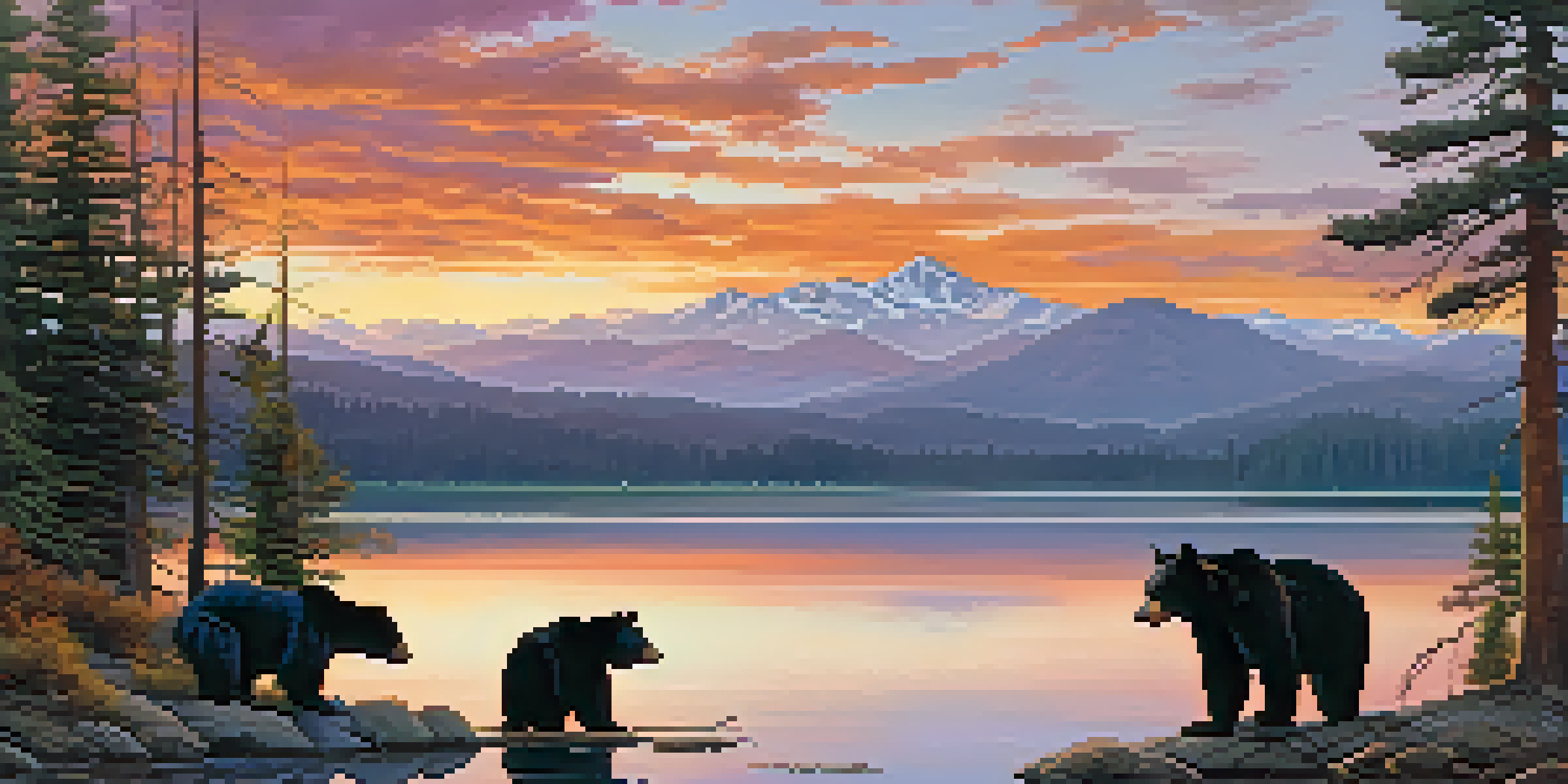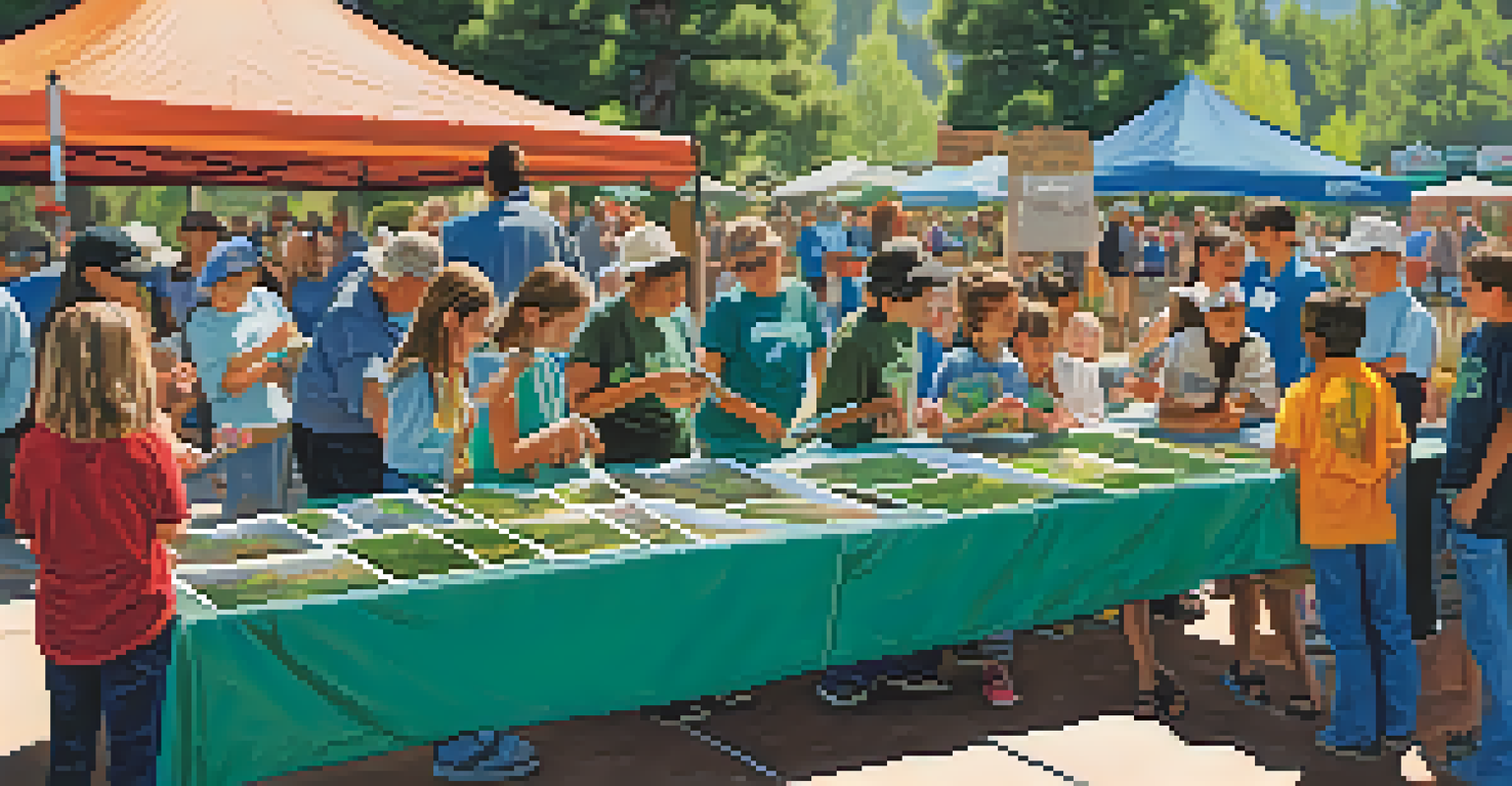Big Bear's Wildlife: Conservation Efforts for Local Species

Understanding Big Bear's Unique Wildlife Ecosystem
Big Bear Lake is not just a picturesque getaway; it's a thriving ecosystem teeming with diverse wildlife. From the majestic bald eagle soaring overhead to the playful black bears roaming the forests, each species plays a vital role in maintaining the area's ecological balance. This unique blend of flora and fauna is what makes Big Bear a treasure worth protecting.
In every walk with nature one receives far more than he seeks.
The region's varied habitats, including forests, meadows, and wetlands, support a rich tapestry of life. For instance, the lake itself is home to various fish species, which in turn attract birds and mammals. Understanding these intricate relationships helps us appreciate the importance of conservation efforts in preserving Big Bear's natural beauty.
As visitors flock to this stunning locale, it's crucial to recognize our responsibility in protecting these wildlife communities. By fostering awareness and respect for local species, we can ensure that future generations continue to enjoy the wonders of Big Bear's wildlife.
Key Conservation Efforts in Big Bear
Conservation initiatives in Big Bear focus on protecting native species and their habitats. Organizations like the Big Bear Valley Recreation and Parks District work tirelessly to restore native plant communities and reduce invasive species, which can disrupt local ecosystems. Their efforts not only bolster wildlife populations but also enhance the beauty of the area for residents and visitors alike.

Community involvement is another critical component of these conservation efforts. Local volunteers participate in tree planting events, clean-up days, and educational programs, fostering a sense of stewardship for the environment. These activities create a stronger bond between the community and the natural world, emphasizing that everyone has a part to play in conservation.
Big Bear's Rich Wildlife Ecosystem
Big Bear Lake hosts a diverse range of species that contribute to its ecological balance, highlighting the importance of conservation.
Additionally, partnerships with environmental organizations bolster these initiatives. Collaborations with groups dedicated to wildlife rehabilitation ensure that injured or orphaned animals receive the care they need, allowing them to thrive once more in their natural habitats.
Protecting the Endangered Species of Big Bear
Big Bear is home to several endangered species, including the California condor and the Southern mountain lion. Conservationists are working diligently to protect these animals by monitoring their populations and preserving their habitats. Efforts include establishing protected areas and creating wildlife corridors that allow safe passage for these elusive creatures.
The greatest threat to our planet is the belief that someone else will save it.
Public education plays a vital role in the conservation of these endangered species. By informing the community about the risks these animals face and how to coexist with them, organizations hope to foster a culture of respect and protection. For example, simple practices like securing trash can help prevent human-wildlife conflicts, benefiting both parties.
Moreover, research initiatives focused on these species provide valuable data that informs conservation strategies. By understanding their behaviors, breeding patterns, and habitat needs, conservationists can tailor their efforts to ensure the survival of these remarkable animals in Big Bear.
The Role of Local Communities in Conservation
Local communities are the heartbeat of conservation efforts in Big Bear. Residents play a crucial role in monitoring wildlife and reporting any unusual behaviors or threats. By staying connected with nature and being vigilant, they contribute to the overall health of the ecosystem.
Community-driven events, such as wildlife festivals and educational workshops, help raise awareness about the importance of conservation. These gatherings not only educate the public about local species but also unite people in their commitment to preserving the environment. It's a wonderful reminder that when we come together, we can make a significant impact.
Community Involvement in Conservation
Local residents play a vital role in conservation through active participation and stewardship of their environment.
Additionally, local businesses often support conservation initiatives, contributing funds or resources to aid in these efforts. This partnership between the community and local enterprises fosters a culture of sustainability and appreciation for Big Bear’s wildlife.
Challenges Facing Wildlife Conservation in Big Bear
Despite the positive strides being made, Big Bear's wildlife faces several challenges. Climate change, habitat loss, and pollution threaten the delicate balance of the ecosystem. Each of these factors can disrupt food sources, breeding grounds, and migratory patterns, making it essential to address these issues head-on.
Another significant challenge is the increasing human population in the area. As more people visit or move to Big Bear, the pressure on local wildlife intensifies. Urban development can encroach on habitats, while recreational activities may disturb animals during crucial breeding seasons.
To combat these challenges, ongoing education and proactive measures are vital. By promoting sustainable practices and encouraging responsible tourism, we can help minimize our impact on the environment while still enjoying the beauty of Big Bear.
Innovative Approaches to Wildlife Conservation
In response to the challenges wildlife conservation faces, innovative approaches are being implemented in Big Bear. Utilizing technology, such as wildlife cameras and GPS tracking, helps conservationists monitor animal populations and their movements. This data is invaluable in understanding how to protect these species effectively.
Another exciting development is the use of citizen science initiatives, where community members contribute to data collection and research. By engaging the public, these programs not only enhance conservation efforts but also foster a deeper connection between residents and their natural surroundings.
Challenges to Wildlife in Big Bear
Climate change, habitat loss, and increasing human populations pose significant threats to Big Bear's wildlife and ecosystems.
Moreover, habitat restoration projects are increasingly incorporating native plant landscaping. These efforts not only support local wildlife but also enhance the beauty of the area, creating spaces that everyone can enjoy while promoting biodiversity.
How You Can Get Involved in Conservation
Getting involved in conservation efforts in Big Bear is easier than you might think! Whether you're a local or just visiting, there are numerous ways to make a positive impact. Start by participating in community clean-up events or wildlife monitoring programs, which help keep the area pristine and wildlife-friendly.
Educating yourself and others about local species and conservation practices can also make a difference. Share what you learn with friends and family or engage on social media. The more people understand the importance of preserving Big Bear's wildlife, the more support conservation efforts will receive.

Lastly, consider supporting local conservation organizations through donations or volunteering. Your contributions can help fund essential projects and initiatives that ensure Big Bear's wildlife thrives for generations to come.